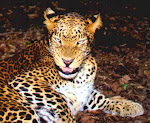The Brilliance of Alaska's Aurora Borealis
In the cool blue of north Alaska is a unique phenomenon that is both delightful and amazing. Explorers have written about it, songs sung from generation to generation by both Arctic and Antarctic natives, and countless photos and paintings have tried to capture its beauty.Stories of its brilliance has been told around camp fires long before the written word, and we call it today in the northern hemisphere, the Aurora Borealis, or The Northern Lights.
It usually hides inside a circular region called the geomagnetic pole, but sometimes spills out further south. It is found both in the Arctic Circle of the North Pole, and the Antarctic Circle on the South Pole. In the south it is called the Southern Aurora or The Aurora Australis, but is the exact type of event.
This photo was taken in Fairbanks, Alaska, considered one of the best places to see an Aurora. On special occasions, it has been found significantly lower too, even as far south as New York State A navy friend from Oregon said he remembered it as a child.
Any display at all is rare however, and an exhibit like the one seen above is even more so. There are some who have found themselves in the wilderness, especially in valleys, that will swear the Aurora lights have come down from the sky to hover just a few hundred feet above them, even following them as they walk.
Scientists say that this is just an optical illusion, and that the altitude of its lower edge is about sixty or seventy miles above the earth. To give you a proper perspective, the distance above where the Aurora show is going on is ten times higher than a jet can fly!
I saw one that might have been considered small, but as it dazzled above the snow it lit up the woods and houses in hues of deep green and blue, with little splashes of yellow. Seems Auroras are at their best with a full moon and snow accompaniment.
The Aurora is created when a wisp of super hot gases from the sun is blown away as Solar Wind. Three days later it finds its way to earth, and is pulled in by the earth’s gravity. It is magnetically charged in the magnetosphere, and the particles discharge electrically in the Ionosphere, another strata of our atmosphere found very high up. When they discharge, the emission causes colors to be displayed in a magical magnetic storm, and sometimes displays every color of visible light.
It is very hard to describe, and a photo can never do it justice. To me, it resembles a curtain of glittering stardust, back lit by multicolored sparkles. It is worth waiting up for, especially when all of the many variables come together.
Today we talk about sun spots and cosmic rays playing with weather. These sun flairs indeed play havoc with telecommunications and the strong ones can cause powerful weather patterns that can heat up or cool down an entire year of climate.
A hot steaming cup of hot cocoa, a cold nose on you cheek, arms snuggling warm under a thick wool blanket, a full blue moon hanging suspended over a valley of white powdered snow, and an unexpected guest, …an Aurora Borealis! It is magic. Next time, I hope to have my grand kids with me.





No comments:
Post a Comment